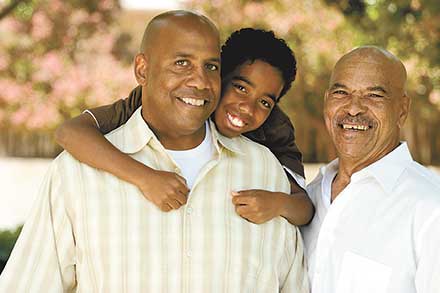The Set-Up
Heart attacks and most strokes are triggered when a blood clot blocks a blood vessel in the heart or brain. That internal event sets off a cascade of physical symptoms — telltale signs that mean it’s time to call 911 for emergency help. It’s not just how fast you get to the hospital. Paramedics start treating you on the way.
If you’re on the scene when a friend, a loved one or even a stranger has a heart attack or a stroke, you can go from bystander to lifesaver if you know what to look for.
Heart on Their Sleeve
Rarely does a heart attack create dramatic Hollywood-esque pain. Most people describe a feeling of heaviness, oppression, fullness or tightness. That tends to cause a delay in the recognition of the symptoms as coming from the heart. This delay in treatment puts the heart muscle in jeopardy.
Someone having a heart attack may say they have:
•Chest pain or discomfort
•Pain or discomfort in the arm, back, neck, jaw or stomach
•Shortness of breath
•Nausea, lightheadedness or a cold sweat
When in doubt, call 911 and let the experts decide. It takes well-trained physicians and nurses and lab tests and often imaging tests to confirm a heart attack.
Spot a Stroke FAST
Strokes cause numbness or loss of function on one side of the body. Our brain has two hemispheres, and strokes are usually on one side or the other, so asymmetry — drooping or limpness on just one side — in the face or body is a red flag for an observer.
The acronym FAST can help you remember the signs of stroke:
•FACE: Does one side of the face droop?
•ARMS: Does one arm drift down when the person raises both?
•SPEECH: Is speech slurred or strange?
•TIME: If any of these symptoms are present, it’s time to act fast and call 911 right away. Clot-busting drugs may be an option if a person gets to the hospital in the first few hours after stroke symptoms begin.
A small number of strokes are caused by bleeding in the brain, which can produce an excruciating headache. But for the most common type of stroke caused by a blood clot within a narrowed artery, there typically is no pain.
At Gwinnett Medical Center, we are nationally recognized leaders in stroke care, with multiple accreditations and awards. To learn more about our comprehensive stroke care, visit gwinnettmedicalcenter.org/stroke. To learn more about our comprehensive cardiac care, including an online heart health risk assessment, visit gmcheart.org.


